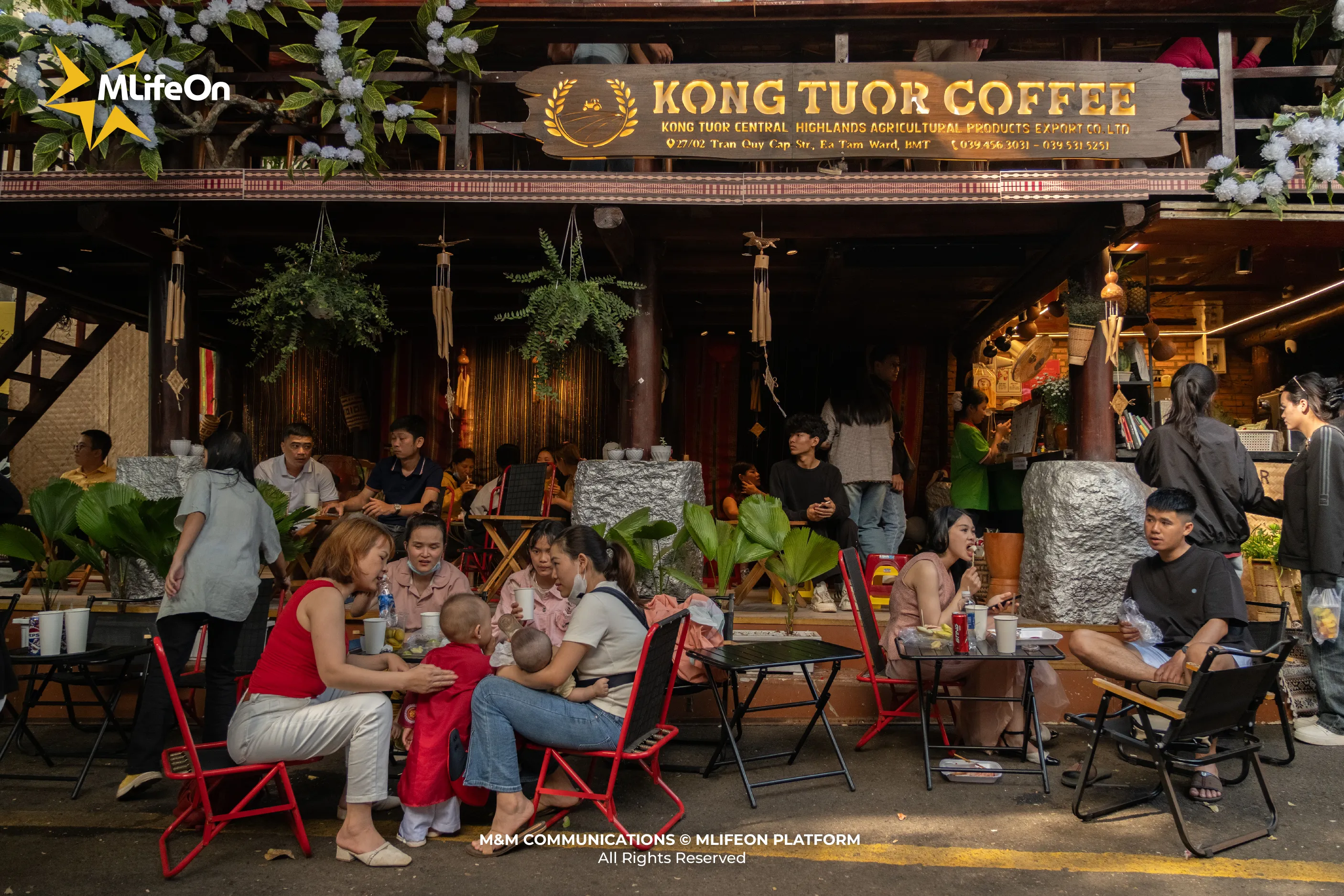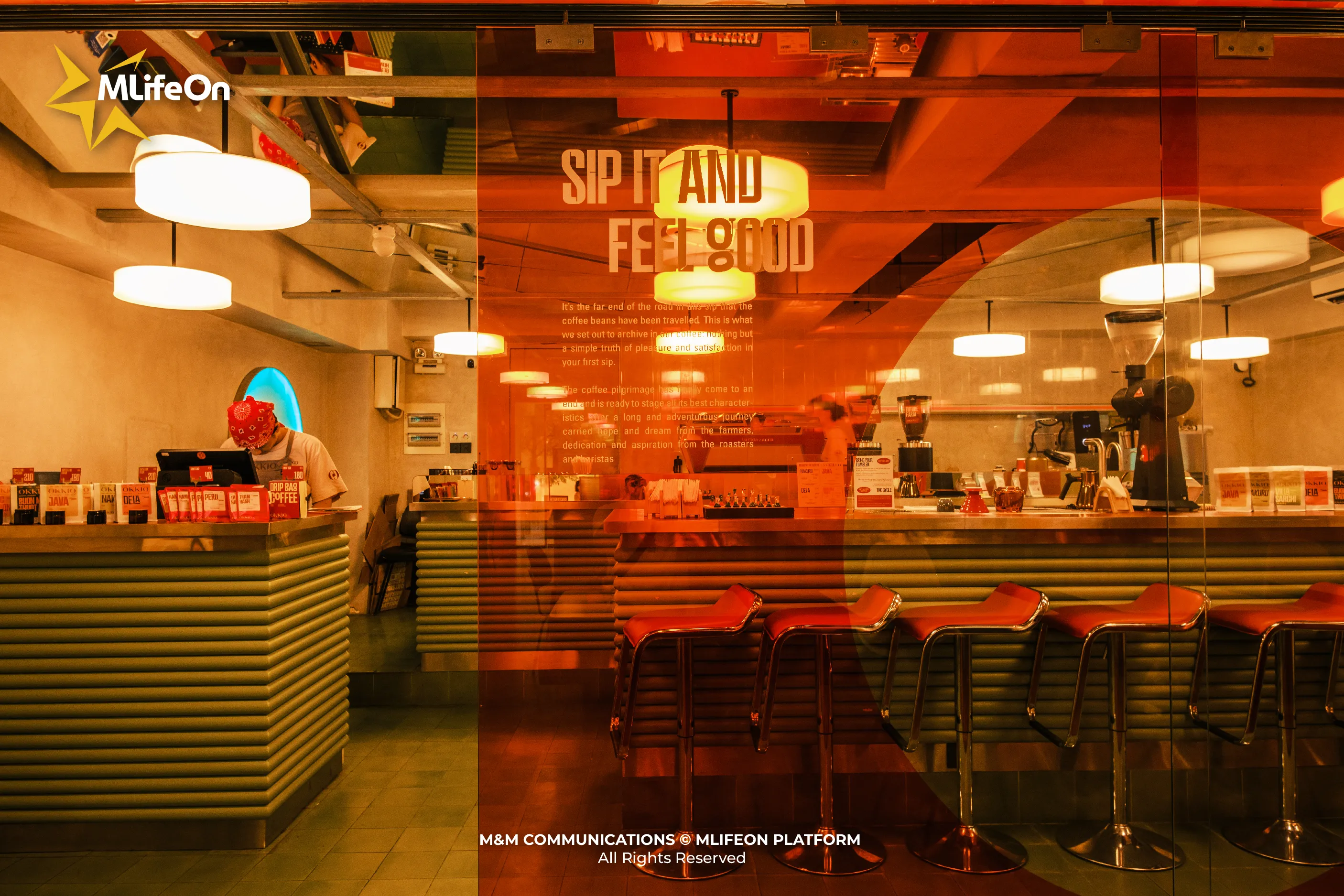Vietnam is one of the countries with a strong coffee culture, with domestic consumption increasing. According to Mr. Nguyen Nam Hai, Chairman of the Vietnam Coffee and Cocoa Association (VICOFA), in the period 2015-2020, domestic coffee consumption increased by an average of 4%/year. Total domestic coffee consumption increased from 158,000 tons in 2015 to 220,000 tons in 2022. Per capita, coffee consumption also increased significantly, from 1.7 kg in 2015 to 2.2 kg in 2022.
Forecasts from VICOFA show that from 2025-2030, domestic coffee consumption may continue to grow at a rate of 6.6%/year, expected to reach 270,000 - 300,000 tons in 2025. These figures clearly reflect the strong growth trend of the domestic coffee industry, despite the volatile economic situation.
The explosion of coffee shops in Vietnam
Along with the demand for coffee consumption, the number of restaurants and coffee shops in Vietnam is also constantly increasing. According to the iPOS food and beverage (F&B) market report, by the end of 2022, the whole country will have about 338,600 restaurants and coffee shops, with a growth rate of 2% per year. Notably, compared to 2019 - the time before the Covid-19 pandemic - the number of restaurants and coffee shops has increased by about 18,000 new establishments.
Ho Chi Minh City is the city with the largest number of coffee shops in the country, accounting for nearly 40% of the total number of shops nationwide, nearly 3 times higher than Hanoi. This is also clear evidence that coffee culture has become an indispensable part of urban life, especially in big cities.
Vietnamese coffee-going trends: Men prefer frequency, women care about experience
The iPOS survey also shows interesting habits of Vietnamese people when going to coffee shops. In particular, men tend to visit coffee shops more often than women. About 13% of men participating in the survey said they go to coffee shops every day, while this rate for women is only about 7%. If we consider weekly frequency, men also go to coffee shops more often than women.
Although they do not visit coffee shops as often as men, women tend to spend more on this activity. According to the survey, 48% of women are willing to spend from 41,000 - 70,000 VND/coffee, while men mainly spend from 20,000 - 40,000 VND/time. This shows that women value the experience more, are willing to pay a higher price to enjoy a beautiful space, quality drinks and good service.
Space and experience: Factors that determine coffee-going habits

In addition to the quality of drinks, the space of the shop is also an important factor influencing customers' decisions. Up to 51.4% of survey participants said they choose a coffee shop based on space criteria. Factors such as decoration style, quietness or open space close to nature all play an important role in the customer experience.
According to F&B experts, in today's era, coffee shops are not only a place to enjoy drinks but also a space to work, study, meet friends or even create content on social networks. Therefore, coffee shops increasingly focus on creating a unique style, meeting the diverse needs of customers.

Conclusion
The demand for coffee consumption in Vietnam continues to grow strongly, leading to the continuous development of the coffee shop market. Vietnamese people's coffee-going habits are also changing significantly, with differences between men and women in frequency and spending levels. At the same time, the space of the shop and the experience are also increasingly becoming important factors in determining the choices of diners.
In the context of an increasingly competitive F&B market, capturing consumer trends and understanding customer behavior will be the key for coffee brands to develop sustainably in the future.
—------
CREDIT:
- Photography: Luan Nguyen, Quan Tran
- Content: Giang Huynh
- Design: Phuong Nguyen